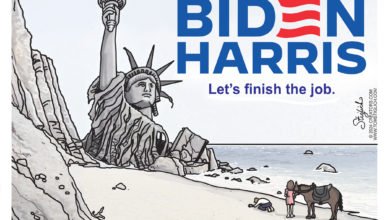Experts Concerned on Coming Depression
In a recent Telegraph article, it is suggested that President Obama is making some historic mistakes in the handling of the American economy. The author goes so far as to say that these mistakes are the same as those made by leaders just before and during one of the darkest financial times in U.S. history – the Great Depression.
The basis for this concern is that Obama’s belief that Keynesian economic policies will return the U.S. economy to growth by printing money and stuffing it back into the economy. Short-term this will create false and unsustainable spikes of growth. If the economy doesn’t grow organically, it will have no support. This creates a spiral of out-of-control spending to prop-up the false economy with more printing and spending. It is precisely these policies that made the depression longer and deeper in the United States than in other countries where they took more of a laissez-faire approach – most of which had come out of the depression by 1931.
As a side-effect, the dollar will drastically weaken as an oversupply of money is created. This will inflate the cost of goods as it will take many more dollars to purchase commodities. High inflation will suppress demand and increase the velocity of the economic death-spiral. Of course, Keynesians would print and spend more to combat the ever-decreasing G.D.P. which keeps this whole circle of ineptitude going. (print more money->spend it->weakened dollar->inflation->decreased demand->increased unemployment->rinse and repeat).
Many economists also point at Hoover’s mercantilist trade policies as a factor in worsening the depression in America. The Smoot-Hawley tariff act was a protectionist law that raised tariffs on 20,000 imported goods. In a move showing a naivety of economic history, President Obama is suggesting a 55% tariff on Chinese goods. When taken with Obama’s anti-free trade rhetoric, striking similarities to President Hoover’s errant thinking become evident.
Let’s not forget the draconian tax increases that come with the Keynesian belief that the government must stabilize demand during times of economic trouble. By the end of 1931 President Hoover recommended a gigantic income tax increase in an effort to save the country from skyrocketing deficits. Marginal rates rose by as much as 38% to a high of 63% on taxable income and the effect on household spending was dramatic. Barack Obama is already floating trial balloons on the subject of middle-class tax increases to pay for all the entitlements and other government spending he is promoting.
Some argue that we are not heading into repeat of 1929-1937. In Steven Levitt’s article, This is Not Another Great Depression, Levitt makes the case that we are not on the road to a depression because G.D.P. has not changed when evaluated between Q4 2007 and Q4 2008. But what about the 4 successive declines1 from Q3 2008 through the second quarter of 2009 – a total drop of almost 3% and a trend that has not yet reversed.
Unemployment statistics are also in stark disagreement with Levitt’s assertion. Since the start of the recession near the end of 2007, unemployment has gone from 4.9% to its present 9.7%. During the height of the depression era, unemployment swelled to over 20%, but if we look at 1930 when the depression was beginning to take hold, the unemployment rate was only 8.9% – nearly a point lower than today.
Today’s employment numbers are also less accurate than those kept during the depression. Currently, if a worker becomes discouraged and just quits looking, he falls out of the statistics. That person is no longer unemployed. Some estimations2 put the disparity due to this difference in accounting at somewhere between 5% and 10%. That would put our current unemployment rate, adjusted for the rules used in the depression, at between 14.8% and 19.8% – much worse than during the start of the depression and approaching dangerously close to the worst numbers achieved in the 1930’s.
Just prior to the Great Depression, Russian economist Nikolai Kondratiev made the case that economies had super-cycles of roughly forty-to-sixty years. With the darkest days of the 1930’s roughly seventy years behind us, Nikolai would say we are due.
Looking at history, the assertion could be made that our leaders should consider doing less, spending less, and printing far less money if they truly wish to avoid an economic disaster. The interventionist attitude of the current administration is already showing itself to be repeating history. Canada is already adding jobs3 to their economy while losses mount-up in the United States. Canada and other countries that are taking far more hands-off approaches, are already coming out of their recessions while we appear to be going deeper into the abyss.
Footnotes:
1 – www.bea.gov – “Current-dollar and ‘real’ GDP” report
2 – WikiAnswers – “What was the unemployment rate during the Great Depression”
3 – www.BloggingStocks.com – “Canada posts first job gain in four months”






all good things